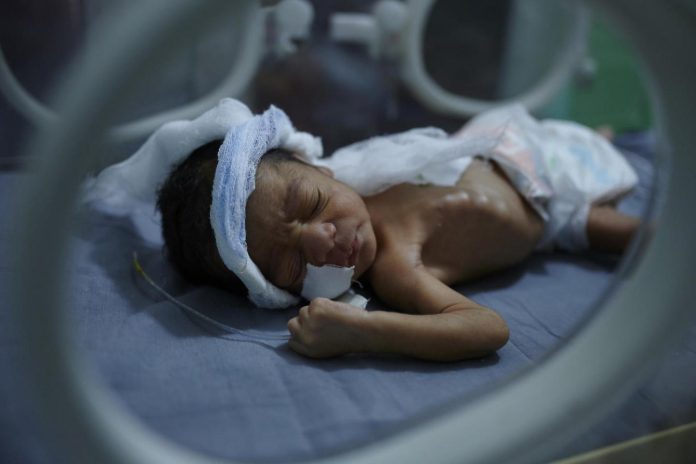An estimated 13.4 million babies were born early prematurely in 2020 – which is around 1 in 10 of all live births, according to a study published in the Lancet by authors from the World Health Organisation, the United Nations Children’s Fund, and the London School of Hygiene and Tropical Medicine.
Premature (also known as preterm) birth is defined as babies born alive before 37 weeks of pregnancy are completed. There are sub-categories of preterm birth, based on gestational age: extremely preterm (less than 28 weeks); very preterm (28 to less than 32 weeks); and moderate to late preterm (32 to 37 weeks).
Since prematurity is the leading cause of death in children’s early years, the experts say there is an urgent need to strengthen both care for preterm babies as well as prevention efforts – particularly maternal health and nutrition – so as to improve childhood survival.
They noted that for those who live, preterm birth also significantly increases the likelihood of suffering major illnesses, disability and developmental delays, and even chronic diseases as adults like diabetes and heart conditions.
“As with other major trends relating to maternal health, no region of the world has significantly reduced rates of preterm births over the last decade. The annual global rate of reduction in preterm births between 2010 and 2020 was just 0.14 per cent,” they added.
“Preterm babies are especially vulnerable to life-threatening health complications and they need special care and attention,” said Dr Anshu Banerjee, Director of Maternal, Newborn, Child and Adolescent Health and Ageing at WHO: “These numbers show an urgent need for serious investment in services available to support them and their families as well as a greater focus on prevention – in particular, ensuring access to quality health care before and during every pregnancy.”
The paper, National, regional, and global estimates of preterm birth in 2020, with trends from 2010: a systematic analysis, provides global, regional and country estimates and trends for preterm births between 2010 and 2020, revealing large disparities between regions and countries.
“Around 65 per cent of preterm births in 2020 occurred in sub-Saharan Africa and southern Asia, where over 13 per cent babies were born preterm. The rates in the worse affected countries – Bangladesh (16.2 per cent), Malawi (14.5 per cent) and Pakistan (14.3 per cent) – are three or four times higher than those in the least affected countries – Serbia (3.8 per cent), Moldova (4 per cent) and Kazakhstan (4.7 per cent).
“Preterm birth is not just an issue in low and middle-income countries, however, and the data shows clearly that it affects families in all parts of the world.
“Rates of 10 per cent or higher occur in some high-income countries such as Greece (11.6 per cent) and the United States of America (10 per cent).
“Maternal health risks, such as adolescent pregnancy, infections, poor nutrition, and pre-eclampsia, are closely linked to preterm births. Quality antenatal care is critical to detect and manage complications, to ensure accurate pregnancy dating through early ultrasound scans and if needed, to delay labour through approved treatments,” WHO’s statement noted.


